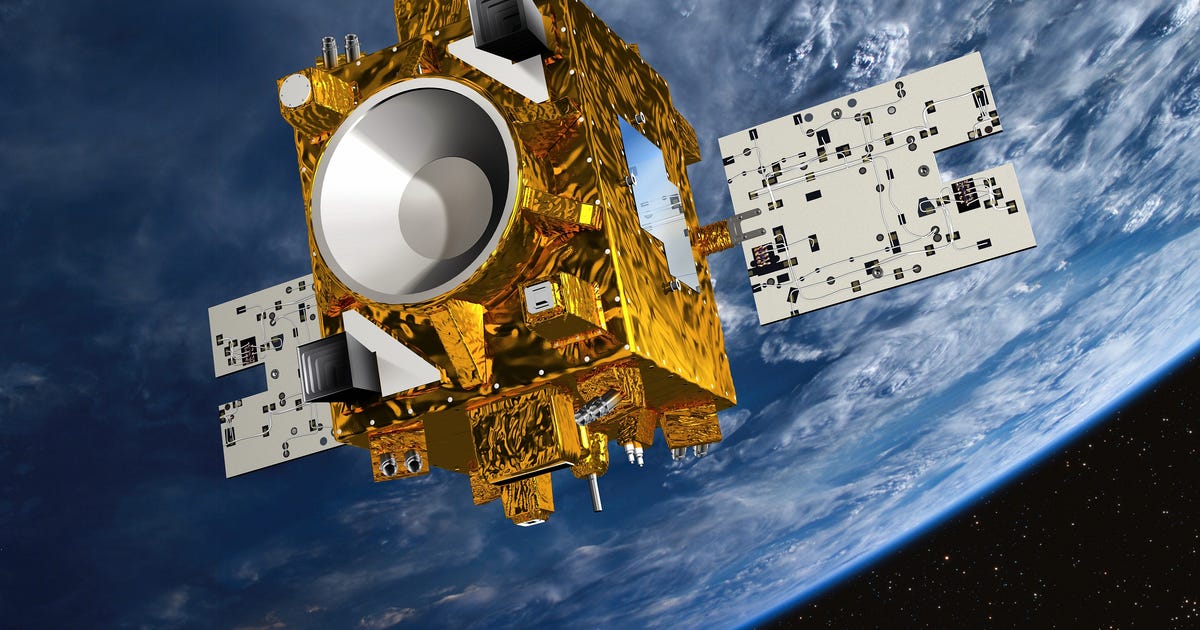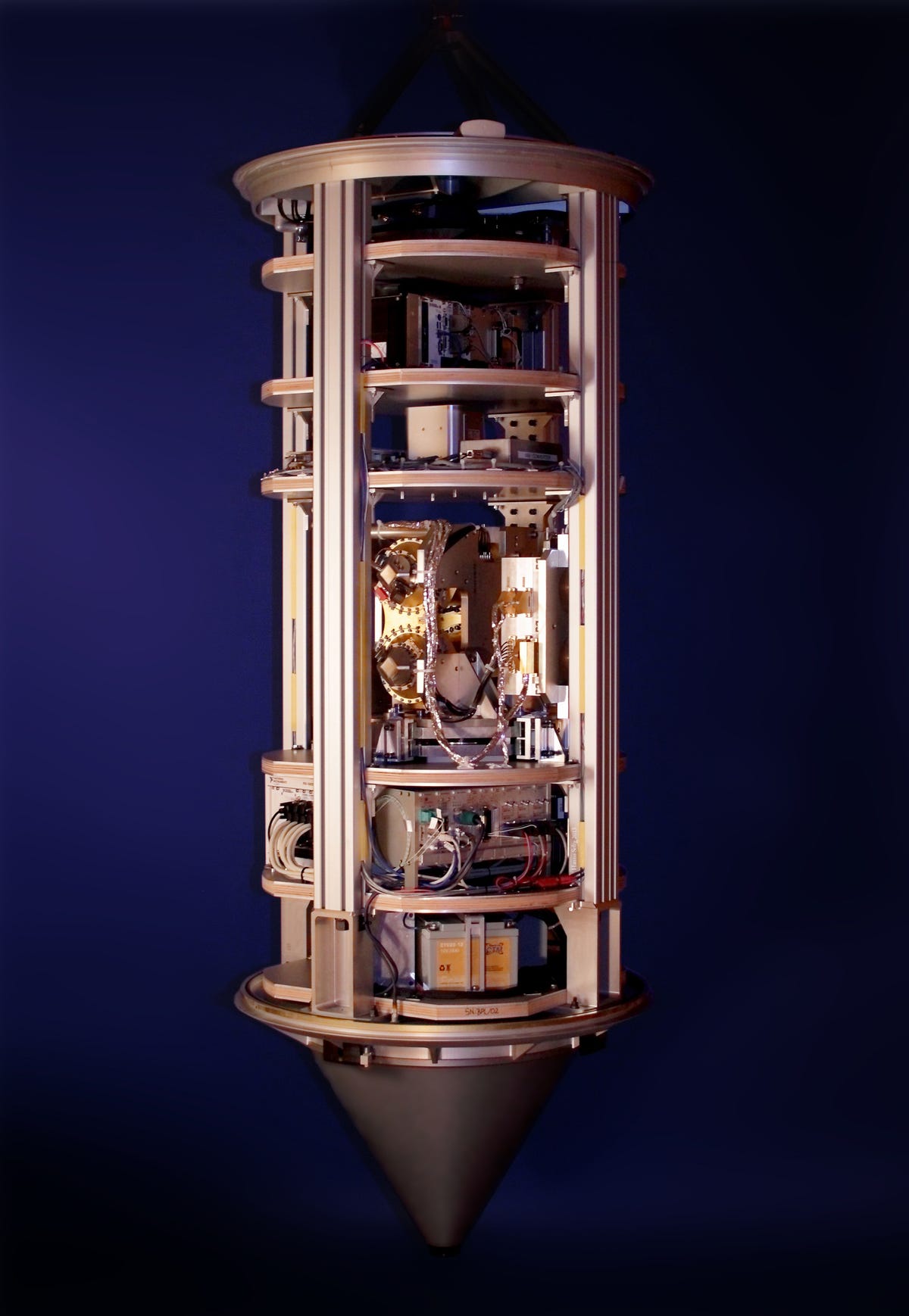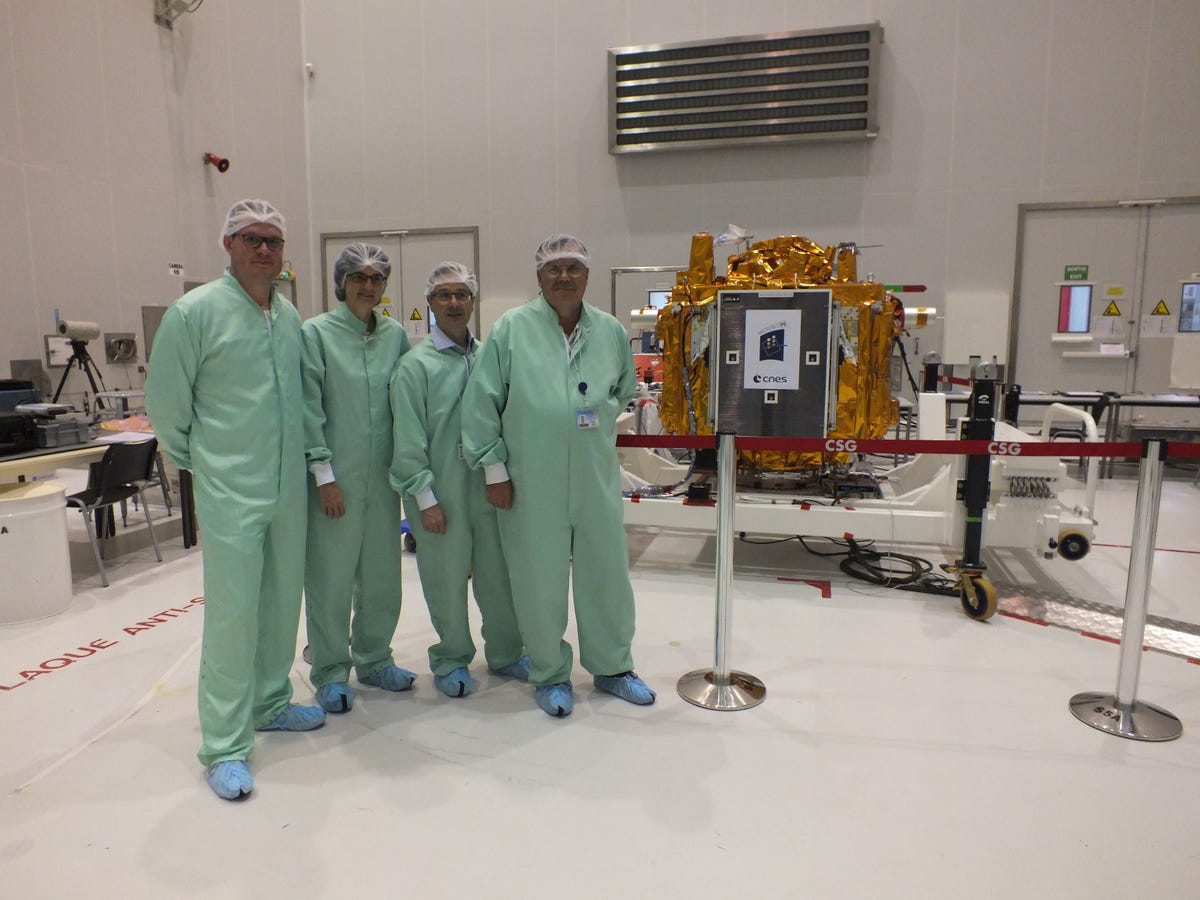
What’s happening
Scientists sent a satellite to space to test Einstein’s weak-equivalence principle with extreme precision.
Why it matters
The weak-equivalence principle is integral to general relativity, so these test results offer yet more support for a core theory of our universe.
In 1916, Albert Einstein dared to declare that Isaac Newton was wrong about gravity. No, he said, it’s not a mysterious force emanating from Earth.
Instead, Einstein imagined that space and time are twisted in an interdimensional grid, and the laces of this grid are like unwound paper clips. Bendable; moldable. It’s only because we exist inside this sort of intangible mesh, he believed, that our simple human bodies experience the facade of a force holding us to the ground. We call that gravity.
(If that hurt your brain, don’t worry, here’s an article dedicated to breaking down this concept.)
And while the genius mathematician referred to this perplexing notion as his theory of general relativity, a title that stuck, his peers called it “totally impractical and absurd,” a title that didn’t. Against all odds, Einstein’s mind-numbing idea has yet to falter. Its premises remain true on both the smallest of scales and the incomprehensibly large. Experts have attempted to poke holes in them again, and again and again, but general relativity always prevails.
And on Wednesday, thanks to an ambitious satellite experiment, scientists announced that, yet again, general relativity has proven itself to be a fundamental truth of our universe. The team conducted what it calls the “most precise test” of one of general relativity’s key aspects, named the weak-equivalence principle, with a mission dubbed Microscope.
“I have been working on this subject for more than 20 years, and I realize the luck I had to be the project manager of the science instrument and the co-investigator of this mission,” said Manuel Rodrigues, a scientist at French aerospace lab ONERA and author of a new study, published in the journal Physical Review Letters.
“This is very rare to leave such a remarkable result in physics history.”
A depiction of how Einstein’s relativity imagines the universe.
Zooey Liao/CNET
What’s the weak-equivalence principle?
The weak-equivalence principle is a weird one.
It pretty much says all objects in a gravitational field must fall in the same way when no other force is acting on them — I’m talking external interference like wind, a person kicking the object, another object bumping into it, you get the idea.
And yes, when I say all objects, I mean all objects. A feather; a piano; a basketball; you and me; anything you can imagine, really, according to this principle must fall in the exact same way.
The Microscope project sent a satellite into Earth’s orbit that contained two objects: a platinum alloy and titanium alloy. “The selection was based on technology considerations,” Rodrigues said, such as whether the materials were easy and feasible to make in a lab.
But most importantly for understanding the weak-equivalence principle, or WEP, these alloys were blasted into Earth’s orbit because stuff up there exists in our planet’s gravitational field without any other forces acting on them. Perfect for the testing criteria. Once the satellite was in space, the researchers began testing, for years, whether the platinum bit and titanium bit fell in the same way as they orbited Earth.
They did — to an extremely precise degree.
“The most thrilling part during the project was to develop an instrument and a mission that nobody has done before at such a level of accuracy — a new world to explore,” Rodrigues said. “As the pioneers of this new world, we expected at each moment to face phenomena that were not seen before because we were the first to enter.”

A capsule used during the Microscope mission.
ZARM/Selig – ONERA 2013
If you’re into the technicalities, the results of the experiment showed that the acceleration of one alloy’s fall differed from the other by no more than one part in 10^15. A difference beyond this quantity, the researchers say, would mean the WEP is violated by our current understanding of Einstein’s theory.
For the future, the team is working on a follow-up mission called Microscope 2, which Rodrigues says will test the weak-equivalence principle 100 times better.
However, this is probably as good as it’s going to get for at least a decade or so, the researchers say.
Great, what does this mean for me?
In a way, general relativity theory’s solidity is kind of a problem. That’s because even though it’s an essential blueprint for understanding our universe, it isn’t the only blueprint.
We also have constructs like the standard model of particle physics, which explains how things such as atoms and bosons work, and quantum mechanics, which accounts for things like electromagnetism and the uncertainty of existence.
But here’s the caveat.
Both of these concepts seem just as unbreakable as general relativity, yet aren’t compatible with it. So… something must be wrong. And that something is preventing us from creating a unified story of the physical universe. The standard model, for instance, famously can’t explain gravity, and general relativity doesn’t really consider quantum phenomena. It’s like a huge battle to be the ultimate theory.

The Microscope team standing with the satellite equipment, to the right.
ONERA/Rodrigues 2016
“Some theories expect a coupling between gravitation and some electromagnetic parameters,” Rodrigues offered as an example. “This coupling doesn’t exist in Einstein’s theory, that is why the WEP exists.”
We find ourselves at a crossroads.
But the bright side is that the vast majority of scientists consider all of these theories to be unfinished. Thus, if we can somehow find a way to finish them – locate a new coupling, for instance, as Rodrigues says, or identify a new particle to add to the standard model – that might lead us to the missing pieces of our universe’s puzzle.
“It should be a revolution in physics,” Rodrigues said, of breaking the WEP. “It will mean that we find a new force, or maybe a new particle like the graviton – it is the grail of the physicist.”
